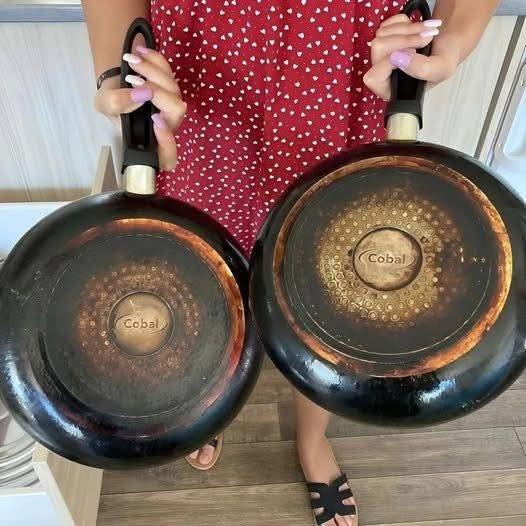
Growing up, I used to marvel at how my aunt’s kitchen always looked spotless—especially her stove. Whether it was a cozy winter evening with stew simmering or a festive holiday dinner, her stove somehow managed to gleam like it was fresh out of the showroom. I finally asked her one day, “How on earth do you keep your stove looking this good?” With a wink and a chuckle, she leaned in and shared her foolproof secret for removing soot and restoring stoves to a brilliant shine. And now, I’m sharing her trusted method with you.
This isn’t a quick spray-and-wipe trick; it’s a lovingly crafted, effective process passed down through generations—and it works like magic. Here’s a detailed, step-by-step guide to transforming your soot-stained stove into a shining masterpiece.
✨ What You’ll Need:
Before diving in, gather the following items:
White vinegar
Baking soda
Dish soap (preferably lemon-scented)
Hydrogen peroxide (optional but powerful)
A spray bottle
Old toothbrush
Microfiber cloths or soft rags
Steel wool pad (fine grade, optional for tougher jobs)
Rubber gloves
Step-by-Step Method:
Step 1: Pre-Clean the Surface
Start by removing any burners, grates, or removable stove parts. Wipe down the stove with a damp cloth to remove loose food particles, crumbs, or grease. This initial wipe helps expose the soot and grime so the cleaning solution can do its job more effectively.
Step 2: Mix the Magic Paste
My aunt’s go-to soot-busting paste is made from simple ingredients:
3 tablespoons of baking soda
1 tablespoon of dish soap
Just enough white vinegar to create a spreadable paste (about 2–3 tablespoons)
Mix these in a bowl. The reaction between baking soda and vinegar gives the paste a bubbling boost that lifts soot and grease with ease.
Step 3: Apply the Paste Generously
Using a cloth or your hands (wearing gloves), spread the paste generously over the soot-covered areas of your stove. For tough stains, work it in with an old toothbrush using circular motions. Don’t be afraid to get into the crevices around burners or edges.
Let it sit for 10–15 minutes to allow the ingredients to break down the soot and burnt residue.
Step 4: Scrub the Stubborn Spots
Once the paste has had time to sit, use a damp sponge or toothbrush to start scrubbing. For especially stubborn patches of soot, my aunt’s secret weapon is fine-grade steel wool, which removes buildup without damaging the surface. Use gentle pressure to avoid scratching.
Optional Boost: For really caked-on soot, spritz the area with hydrogen peroxide before scrubbing. It helps to break down carbon deposits and adds a whitening touch.
Step 5: Rinse and Wipe
Once the scrubbing is done, use a clean, damp cloth to wipe away the paste and lifted grime. You might need a couple of passes to remove all residue.
Step 6: The Final Shine
To finish, spray a mixture of equal parts vinegar and water over the stove and wipe down with a microfiber cloth. This leaves a streak-free, mirror-like finish and helps sanitize the surface naturally.
For gas stoves: Clean the burner grates separately by soaking them in hot water with dish soap and a little baking soda for 20 minutes, then scrub with a sponge or steel wool and rinse.
Bonus Auntie Tip: Season with Oil
Once the stove is dry and shining, my aunt always rubs a tiny drop of olive oil on a clean cloth and buffs it over the surface. This not only adds shine but creates a light protective layer that repels future soot and stains.
Why It Works
The brilliance of this method lies in the chemistry:
Baking soda is mildly abrasive and absorbs odors and grease.
Vinegar breaks down grime and leaves a sparkling finish.
Dish soap cuts through tough grease.
Hydrogen peroxide (optional) acts as a natural bleaching agent.
Olive oil protects and preserves.
Final Thoughts
In a world of harsh chemical cleaners and quick fixes, there’s something beautifully satisfying about a time-tested, natural method. My aunt’s soot-busting stove ritual is more than just a cleaning tip—it’s a small act of care that makes your home feel more loved. Try it once, and you’ll be hooked.
And remember: A clean stove is a happy stove.